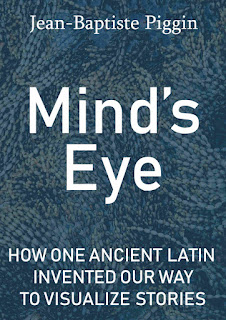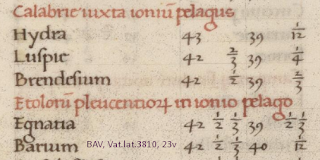Urb. ebr. 1 is the largest object in terms of thickness (330 mm), and actually the document with the greatest weight (45.7 kilograms) in the entire collection of the Vatican. Now it is fully available online: https://t.co/ZCVrnCT08m pic.twitter.com/LXxfvRTGDV— Vatican Library (@vaticanlibrary) November 26, 2018
"Fully" available means that previous to this, a murky black-and-white image of Codex Urbinas 1 was the only offering online. A brief description at MBH tells us the codex contains the Tanakh, Masorah with Targum alternating and the Rashi commentary.
Also new online is the first Persian manuscript to have entered the Vatican Library. Written in the cursive "naskhi" script typical of the Middle East, this book dated to 1312 is one of the earliest surviving Persian manuscripts of any part of the Scriptures.
In all, 33 manuscripts arrived on the website of the library last week for all to see:
- Urb.ebr.1 (Upgraded to HQ), above
- Vat.gr.1646 (Upgraded to HQ),
- Vat.lat.1113 (Upgraded to HQ),
- Vat.lat.1479 (Upgraded to HQ),
- Vat.lat.2385,
- Vat.lat.3045,
- Vat.lat.3169,
- Vat.lat.3318 (Upgraded to HQ),
- Vat.lat.3350,
- Vat.lat.3362,
- Vat.lat.3422,
- Vat.lat.3423 (Upgraded to HQ),
- Vat.lat.4054,
- Vat.lat.4057,
- Vat.lat.4148 (Upgraded to HQ),
- Vat.lat.4154 (Upgraded to HQ),
- Vat.lat.4201,
- Vat.lat.4240 (Upgraded to HQ),
- Vat.lat.4241,
- Vat.lat.4243,
- Vat.lat.4246,
- Vat.lat.4257,
- Vat.lat.4259,
- Vat.lat.4298,
- Vat.lat.4306,
- Vat.lat.4326,
- Vat.lat.4333,
- Vat.lat.4340,
- Vat.lat.11521,
- Vat.lat.13363,
- Vat.mus.538,
- Vat.pers.4 (Upgraded to HQ), the 1312 Gospel of Matthew in Persian (above), shown in the United States in the Rome Reborn exhibition, the first Persian manuscript to enter the pope's collection. Anthony Grafton wrote: "The page displayed here includes the opening of the text of the Gospel of Matthew", though surely this is the ending thereof:
- Vat.sir.560.pt.A (Upgraded to HQ),
This is Piggin's Unofficial List number 186. Thanks to @gundormr for harvesting. If you have corrections or additions, please use the comments box below. Follow me on Twitter (@JBPiggin) for news of more additions to DigiVatLib.














